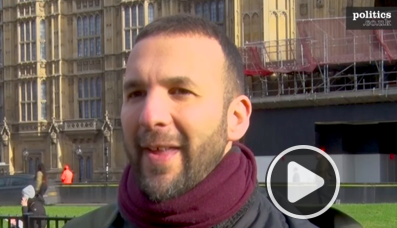What is proportional representation?
Proportional Representation (PR) is an electoral system whereby the composition of the elected body reflects the proportion of support gained by each political party standing in that election.
Proportional representation contrasts with a majority or plural system. Under these arrangements, the candidate with the most votes in a particular constituency is the one elected to Parliament. This is also known as the First-Past-The-Post system, and is the one currently used for elections to the House of Commons.
The debate around proportional representation in the United Kingdom is entrenched, with strong opinions on each side of the dividing line. A referendum on changing the electoral system was put to the public in May 2011. The idea was rejected by 67.9% of those who took part.
There is also an institutional paradox that thwarts the adoption of proportional representation.Any party that comes to power under First Past The Post system is likely to appreciate the advantages that brings to their government: a strong mandate (usually), a lack of coalition partners, and considerable freedom of action. Therefore, coming into power under First Past The Post will likely dampen any party’s enthusiasm for subsequent electoral reform, something that was said to have happened to the Blair government after the 1997 General Election.


Since the start of the Twenty First Century, each major type of proportionate voting system has been in operation in some form within the United Kingdom. Elections to the Scottish Parliament and Welsh Assembly are conducted under the Additional Member System (AMS). Elections to the Northern Ireland Assembly are held under the Single Transferable Vote (STV) system. While, prior to the UK’s departure from the European Union, elections to the European Parliament were held through the Party List system.
Campaigns for electoral reform in the UK
Until their abolition as dedicated constituencies in 1950, the University seats that represented universities in the House of Commons, were elected under the single transferable system of proportional representation.
Although there had been some calls for electoral reform in the early Twentieth Century, the movement started to gain momentum in the 1970s. Not least as during the late 1970s, the First Past the Post failed to produce the strong majority-accountable government that was said to be the system’s core advantage.
During the 1980s the campaign for PR was spread headed by a new third force in British politics (the Liberal/SDP Alliance). The party started to poll around a fifth of the national vote, and yet gained only a relatively small handful of seats in the House of Commons.
Ahead of the 1997 General Election, the Labour Party had flirted with the idea of holding a referendum on electoral reform. However, after the party’s landslide victory, no such referendum was forthcoming, albeit the electoral system for the European Parliament was changed to a closed party list system (proportional representation) in England, Scotland and Wales.
Unable to secure a majority in May 2010 General Election, the Conservatives formed a coalition government with the Liberal Democrats. As a key condition for their coalition support, the Liberal Democrats secured the promise that a referendum would be held on the merits of the alternative member system.
In May 2011, a national poll was held on whether to adopt an Alternative Vote (AV) method to elect MPs to the House of Commons. The electorate decided by a substantial majority (67.9%) to reject the proposal, meaning the First Past the Post system was retained.
Although bruised by that referendum defeat, campaigners for electoral reform continue to make the case for the reform of the electoral system to the House of Commons.
In 2021, a motion to support Proportional Representation was debated at the Labour Party conference, but the proposals were rejected.
However in a similar vote in 2022, the conference has voted for a manifesto commitment to proportional representation for general elections. Labour party leader, Sir Keir Starmer, has though remained coy on any support for proportional representation, such that it is far from clear as to whether any such commitment will indeed make it into the party’s manifesto.
Labour will not back proportional representation despite members’ support
The arguments made for proportional representation
Advocates of proportional representation argue that elected assemblies should embody the full diversity of national preferences, and only then can parliamentary decisions, be considered democratically legitimate.
As such, it is argued that proportional representation provides fairer treatment for minority parties, ones whose representation in the House of Commons is currently disproportionately scarce under the First Past the Post System.
For example it is pointed out that in the 2015 General Election, UKIP polled 12.6% of the ballots cast but won just one of the six hundred and fifty seats. Similarly the Green Party polled 2.7% of the electorate in 2019, but won just won one seat. Conversely in Scotland, under the current arrangements, the Scottish National Party won just 45% of the total vote, yet in 2019 secured 48 out of the 59 Scottish constituencies in the House of Commons (81%).
In addition to being more representative, it is claimed that proportional representation would also eliminate a further potential flaw in the current system, namely whereby a party may receive the highest share of the popular vote, and yet lose the election. This was the case in 1951, when the Labour Party polled the greater number of votes in the country, yet won fewer seats than the Conservatives at Westminster. In February 1974 the opposite happened, the Conservative Party won the popular vote, but won less seats than the Labour Party.
Supporters of proportional representation also point to how it can tackle the issue of so called ‘wasted votes’. These relate to votes made by supporters of a particular party in a constituency whereby their preferred choice has little or no possibility of winning. It is argued that the ‘wasted votes’ problem fuels voter apathy and disengagement with politics. In this context, people point to how the 67.4% turnout in the UK’s 2019 General Election, was lower than that of Germany (76.2%) and New Zealand (82.2%), both of which use a proportionate system. It also leads people to engage in tactical voting where they are said to end up voting for parties that they don’t primarily support.
Although proportional representation systems are rarely thought to provide a clear cut election result, with an overall majority for one particular political party, supporters of PR, do not necessarily foresee this as a problem. They argue that the resulting need for coalition is something that demands and leads to greater consensus in the policy making process.
Opposition to proportional representation
Opponents of proportional representation take an equally strong view in their opposition to a change in the electoral mechanics. They suggest that the election result should be geared to who people like most, rather than to who they dislike least.
They typically argue that it is more important that the system can deliver, and then eject an ineffective government, rather than purely be representative of opinion. .
Critics of proportional representation invariably refer to how proportional voting systems rarely lead to an overall majority for one particular party. As such it is claimed that the result of an election always comes about as a consequence of negotiations between a handful of political leaders post an election.
It is argued that this form of horse trading ironically provides a greater say to the party with the smallest proportion of votes, as evidenced in the week long deliberations post the 2010 General Election. In that a case, it was then just a few senior figures within the Liberal Democrat Party, that decided who formed the government.
It is claimed that coalition building in this way, can also lead to one party becoming the dominant force in government for decades on end. The ability of particular parties to form coalitions is said to make it easier for them to remain in power on ongoing basis. As such there is far less accountability between the wrath of public opinion and the actual ejection of an unpopular government of the day. It is suggested that in this sense, proportional representation actually reduces democratic consent.
Opponents of the coalition governments that traditional emerge from proportionate systems, also argue that the lack of a clear majority, increases the likelihood of indecision, compromise, and discord within parliament, generating governments which appear weak or unstable in judgement.
Developing a separate line of argument, opponents of proportional representation argue that it reduces the accountability between politicians and a dedicated local area. This is said to be particularly prevalent with the STV or Party List versions of proportional representation. Under these formats, a particular local area with its own particular defined local needs (such as a coastal town, an inner city district, or rural area) lacks a constituency representative in parliament who voters can go to, and who can stand up and champion that area’s particular interests – highlighting the impact that particular policies might be having on its inhabitants.
Finally, opponents of proportional systems argue that this electoral format can provide representation to extremist groups in politics. Without an appropriate threshold in place, it is claimed that extremist parties can quickly gain a foothold in mainstream politics. In this context, campaigners against PR, sometimes make a controversial historical reference to the growth of the National Socialists in German politics during the 1920s.
Types of Proportional Representation
Leading methods of proportional representation include the single-transferable vote (STV), the additional member system (AMS) and the party-list system.
The extent to which an electoral system is considered ‘proportional’ depends on the number of candidates elected per constituency and the existence of any thresholds for successful election.
Single Transferable Vote (STV): (semi-proportional)
Single transferable vote systems use preferential voting in multi-member constituencies. Each voter has one vote. However, if the voter’s preferred candidate has already received enough votes or stands no chance of being elected, this vote transfers to the voter’s second preference. Candidates do not need to secure a majority of votes to be elected. They require a specific ‘quota’ or share of the votes determined by the size of the electorate and the number of positions to be filled.
The single transferable vote is applied in the Republic of Ireland (other than for presidency and by-elections when Alternative Vote is used), Northern Ireland (Assembly and local government elections), and Scottish local government elections. Beyond Europe, STV is used for the Australian Senate, the Tasmanian House of Assembly, and the upper house of India’s federal Parliament.
Additional Member System: (hybrid)
The Additional Member System is a hybrid voting system comprised of both First Past The Post and the Closed Party List. The party-list element is incorporated to make the result of First Past The Post more proportional. Outside the UK it is more commonly referred to as Mixed Member Proportional (MMP).
The exact proportion of constituency representatives and list representatives varies from country to country; the constituency element usually makes up between 50 and 80 per cent. Voters typically have two votes – one for a candidate and one for a party.
Once all votes have been counted, each constituency returns a winner in the traditional style of First Past The Post. If a candidate was standing in a constituency as well as on a party list (i.e., a party leader), their name is taken off the list, and everyone below them moves up a place. The additional members are then allocated with the aim of aligning the number of seats won by each party to their share of the vote. Some systems do this purely on the basis of the party vote, others include the constituency vote.
The Additional Members System is used for elections to the Scottish Parliament, the Welsh Assembly, Germany’s Bundestag, New Zealand’s House of Representatives, and Italy’s Senate and Chamber of Deputies.
Party-List (strictly proportional)
Party-list systems may be either ‘open’ or ‘closed’. Each party provides a list of candidates. Following the open system, voters put a cross by the name of a candidate; following the closed system they put a cross by the name of a party. Voters have only one vote and seats are allocated in proportion to the number of votes received.
Party-list proportional representation is used to elect candidates in multi-member districts, or sometimes an entire country. The exact system varies considerably across the globe, depending on the size of districts, thresholds for securing seats, and the manner in which the seats are allocated.
A number of statistical techniques are used to translate votes into seat allocation. The most common are the d’Hondt method and the Sainte-Lague method, whereby the number of votes for each party is divided by a series of divisors.
Party Lists are used, in varying forms, for elections in Israel, Brazil and South Africa.
Canadian and German elections put contrasting voting systems in the spotlight
Westminster needs to learn from the rest of the UK when it comes to fairer votes
Salmond’s Alba venture exposes Scotland’s voting system flaws
Direct Democracy?
An alternative voice on the electoral reform debate comes from those who advocate for more decisions to be made on an issue by issue basis.
Those opposed to direct democracy of this kind attack the possibility of mob rule, and suggest that important decisions end up being taken by voters who are often ill informed on the intricacies of the matter at hand
Yet at the same time, those favouring a political system which engages the public on an issue by issue basis, note how it can better reflect public opinion. After all, in Parliamentary elections, whether they are elected using a proportional system or not, voters still only cast one vote every five years.
That single vote is supposed to encompass their feelings on the entire wide range of policy areas, as well as reflecting their verdict on the competence of the existing administration.
In Switzerland, voters short cut politicians in this way. People have the chance to vote regularly on individual policy decisions, through a series of formal public votes that are held four times a year. Such votes can cover as many as fifteen separate policy propositions at a time. Data from the Swiss Electoral Study has suggested that over 90% of the Swiss electorate have cast their ballot at least once in the previous 20 votes.
























